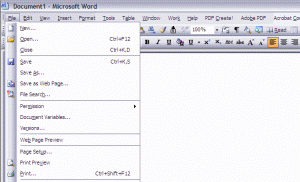In past articles, we discussed human-illiterate computers, usability, memorability, learnability, Tognazzini’s Paradox, design integrity, simplicity, abstraction, discount usability testing, and personas. Now, we will discuss goals and tasks. These are similar terms, and sometimes used almost interchangeably. But using the terms task and goal sloppily is, according to expert software designers, an error that leads to disastrous software design. So it behooves us to understand the differences between tasks and goals in solid detail.
This is written as if I’m writing to someone who’s developing software; and though it is certainly my intent to get people writing software for Emergency Departments to pay attention, it’s just as much to for those of use who use ED software – or someone who is doing something homebrew using Excel or Microsoft Word macros.
The difference between tasks and goals relates to our previous discussion of personas in the last article. First, let’s look at some excerpts from a nice online overview of UML, the Uniform Modeling Language. UML, which is a couple of decades old, was a breakthrough in its day. It allows you to specify how a computer program should interact with people, not in ambiguous English, but using a grammar that allows a more precise specification. Key ideas incorporated in UML include actors: Read the rest of this entry
»






